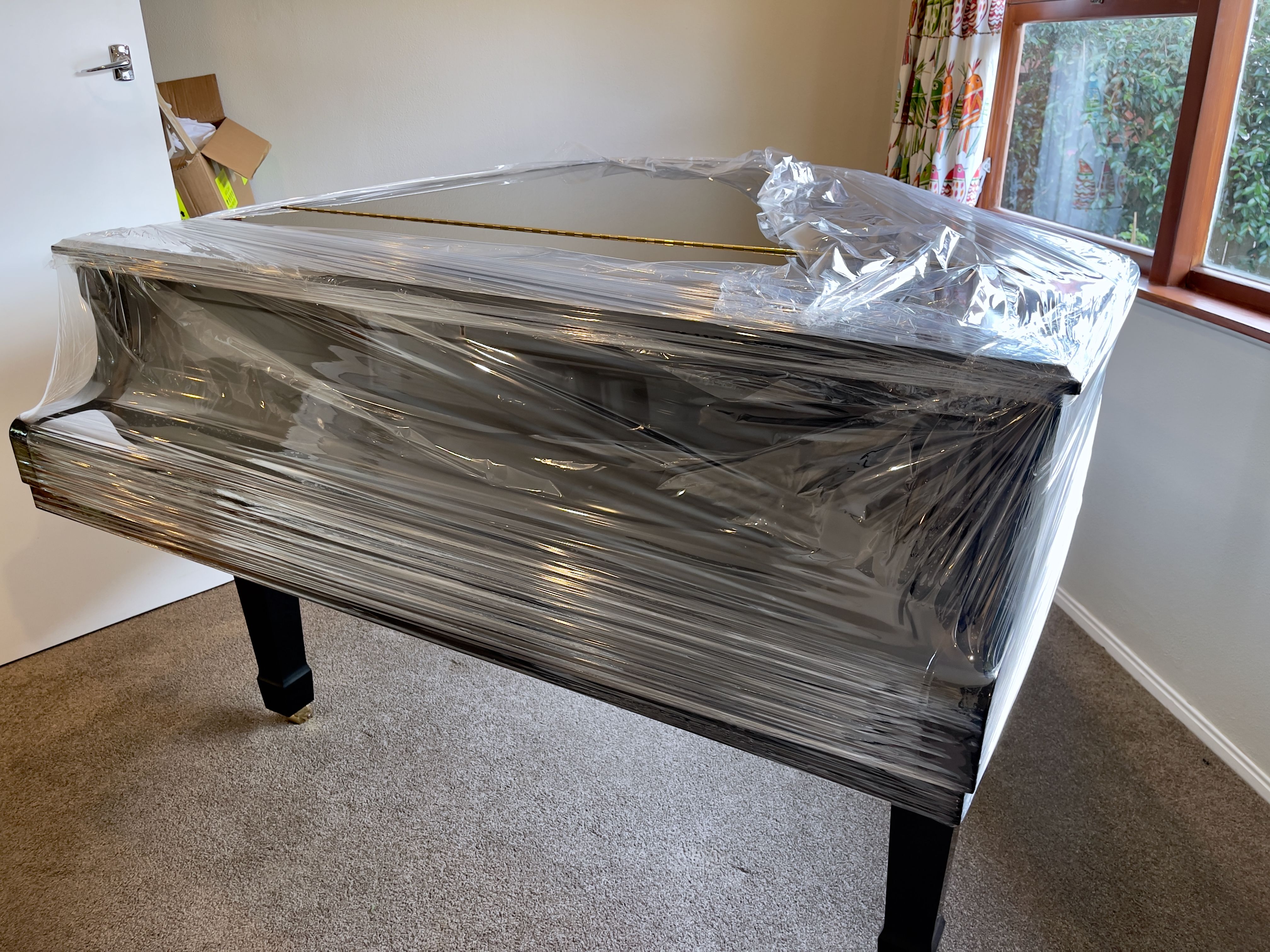Expert Tips for Safe and Efficient Piano Moving
Understanding the Challenges of Piano Moving
Moving a piano is no small feat. These instruments are not only heavy and bulky, but also incredibly delicate. The combination of their weight and fragility makes them one of the most challenging items to relocate. Whether you're moving a piano across town or just to another room, it's essential to approach the task with careful planning and the right techniques.
One of the primary challenges is the piano's weight distribution. Upright pianos can weigh between 300 to 800 pounds, while grand pianos can easily exceed 1,000 pounds. This immense weight is not evenly distributed, making them awkward to maneuver and susceptible to tipping over if not handled correctly.

Preparing for the Move
Preparation is crucial when moving a piano. Begin by measuring the piano and the spaces it needs to pass through, such as doorways and hallways. Make sure there is enough clearance to avoid any damage to the instrument or property. Also, remove any obstacles from the path, including rugs and furniture.
Next, gather a team of strong helpers. Moving a piano is not a one-person job. A minimum of three to four people is often necessary depending on the size and type of piano. It's important that everyone involved understands their role in the moving process to ensure coordination and efficiency.

Tools and Equipment You Need
Having the right tools and equipment can make a significant difference in ensuring a safe and efficient move. A piano dolly or skid board is essential for transporting the instrument over flat surfaces. These tools provide stability and make it easier to maneuver the piano without causing damage.
Additionally, invest in protective padding and moving blankets. These will help cushion the piano against bumps and scratches during transit. Secure the blankets with heavy-duty straps to ensure they stay in place throughout the move.
Using Proper Lifting Techniques
Lifting a piano requires proper technique to prevent injuries. Ensure everyone involved knows how to lift correctly: bend at the knees, keep your back straight, and lift with your legs. Never attempt to lift a piano with your back or shoulders alone.
It's also crucial to lift in unison. Count down before lifting to ensure everyone is synchronized. This coordination helps maintain balance and prevents any sudden shifts in weight that could lead to accidents.

Navigating Stairs and Tight Spaces
Moving a piano through stairs or tight spaces adds another layer of complexity. When navigating stairs, use a ramp if possible, as it provides a smoother transition and reduces the risk of dropping the piano. If a ramp isn't available, take it slow and steady, with one person guiding from below and others supporting from above.
In tight spaces, it's essential to have spotters who can guide the team and prevent collisions with walls or corners. Be prepared to tilt the piano slightly if needed, but always ensure it's well-supported during any adjustments.
Transporting and Reassembling
Once the piano is safely out of the building, transport it using a vehicle equipped for heavy loads. Ensure it's securely fastened within the vehicle to prevent any movement during transit. Upon arrival, carefully maneuver the piano into its new location using similar precautions.
After relocating the piano, reassemble any parts that were removed for the move. This may include legs or pedals. Once everything is in place, consider hiring a professional tuner to adjust the piano's sound quality after its journey.
When to Call Professionals
While many people attempt DIY piano moves, there are situations where hiring professionals is advisable. If the move involves navigating multiple flights of stairs, tight corners, or long distances, professional movers have the expertise and equipment necessary to handle these challenges safely.
Piano movers are trained specifically for this task and can provide peace of mind that your instrument will arrive at its destination unharmed. Investing in professional help can ultimately save time, effort, and potential costs associated with damage or injury.